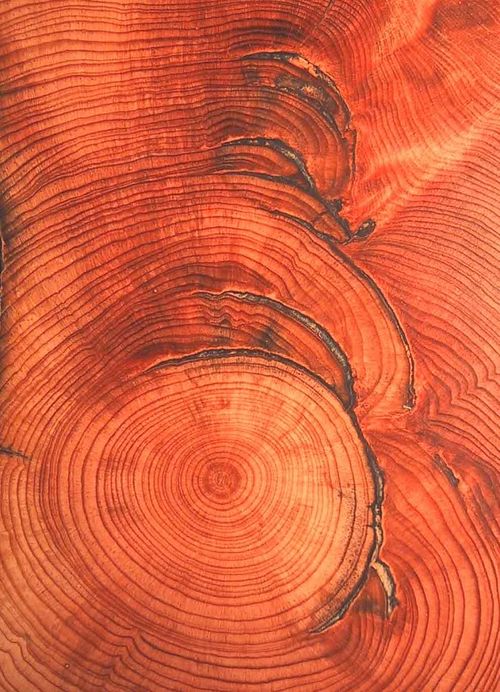 Fluctuations in climate, recorded in the rings of Trees,
Fluctuations in climate, recorded in the rings of Trees,
coincide with historical 'rise and fall' events.
An extensive study of tree growth rings says there could be a link between the rise and fall of past civilisations and sudden shifts in Europe's climate.
A team of researchers based their findings on data from 9,000 wooden artifacts from the past 2,500 years.
They found that periods of warm, wet summers coincided with prosperity, while political turmoil occurred during times of climate instability.
The findings have been published online by the journal Science.
"Looking back on 2,500 years, there are examples where climate change impacted human history," co-author Ulf Buntgen, a paleoclimatologist at the Swiss Federal Research Institute for Forest, Snow and Landscape, told the Science website.
Ring record
The team capitalised on a system used to date material unearthed during excavations.
"Distinct drying in the 3rd Century paralleled a period of serious crisis in the western Roman empire".
"Archaeologists have developed oak ring width chronologies from Central Europe that cover nearly the entire Holocene and have used them for the purpose of dating artefacts, historical buildings, antique artwork and furniture," they wrote.
"Chronologies of living and relict oaks may reflect distinct patterns of summer precipitation and drought."
The team looked at how weather over the past couple of centuries affected living trees' growth rings.
During good growing seasons, when water and nutrients are in plentiful supply, trees form broad rings, with their boundaries relatively far apart.
But in unfavourable conditions, such as drought, the rings grow in much tighter formation.
The researchers then used this data to reconstruct annual weather patterns from the growth rings preserved in the artefacts.
Once they had developed a chronology stretching back over the past 2,500 years, they identified a link with prosperity levels in past societies, such as the Roman Empire.
"Wet and warm summers occurred during periods of Roman and medieval prosperity. Increased climate variability from 250-600 AD coincided with the demise of the western Roman empire and the turmoil of the migration period," the team reported.
"Distinct drying in the 3rd Century paralleled a period of serious crisis in the western Roman empire marked by barbarian invasion, political turmoil and economic dislocation in several provinces of Gaul."
Dr Buntgen explained: "We were aware of these super-big data sets, and we brought them together and analyzed them in a new way to get the climate signal.
"If you have enough wood, the dating is secure. You just need a lot of material and a lot of rings."
© 2024 Created by David Califa. Managed by Eyal Raviv.
Powered by
![]()